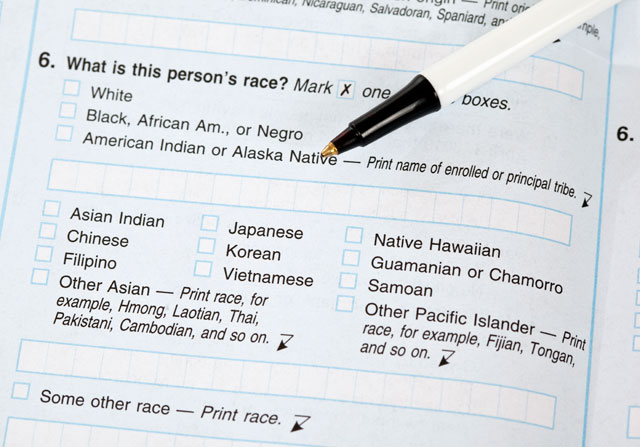
My earlier column for Truthout posed the question: “Are Mexicans Indigenous?” The context of this question complicates the answer(s).
De-indigenized Mexicans and Central Americans in the United States generally share a maiz culture, as do most Amer-Indigenous peoples of the continent who also share in those 7,000-year-old roots.
Yet, how are these peoples, which include Mexican Americans or Chicanx, viewed by the US government, the mainstream mass media and schools? Most importantly, how do they view themselves?
In a technical sense, this issue is important because it affects how the US gets a portrait of itself in three areas: The decennial census, birth certificates and death certificates.
To read more articles by Roberto Rodriguez and other authors in the Public Intellectual Project, click here.
While there is no such thing as race biologically, in a social sense, we are trying to understand how diverse groups of people became artificially grouped together, primarily as white Hispanics/Latinx in 1970 by the Nixon administration. Certainly, the vast majority are not considered “white” in their countries of origin, nor in the US for that matter.
Generally, the majority of those who are assigned into the Hispanic/Latinx ethnic census category have also historically been corralled into the white racial category since the 1940s. Previously, in the 1930s, there was a separate “Mexican” racial category in the census, though due to the umbrage of elites from these communities, the bureau eliminated that category for the 1940 census.
Thereafter, the racial categories to choose from were: White, Black, Asian, American Indian/Alaska Native and “other.” That’s when the Census Bureau began the policy of cajoling Mexicans into choosing the white category, regardless of how they themselves viewed themselves or answered the question. Despite this practice, for the past several decades, some 50 percent of Hispanics/Latinx have been steered into choosing the “white” racial category, whereas around 40 percent have chosen the “other” racial category. The assumption by the bureau is that those who chose “other” were confused and thus, with exceptions, were redirected back into the “white” category. Historically, virtually all people who have chosen the “other” racial option in the US have been people from the Hispanic/Latinx ethnic category. My interpretation of this is that they exercise this option as a way of affirming how the majority are identified in their countries of origin; mestizoa or Indigenous — options not available in the US Census. Of course, some also have African or Asian roots or a mix of all of the above. In some of the Andean countries, there is an even higher percentage of Indigenous peoples whereas some countries have higher rates of Black or African roots.
Despite these roots, this corralling finally and officially stopped with the 2010 census, though it has not actually stopped. Neither the bureau, the corporate media nor the schools have mounted education campaigns to counter this previous narrative, or inform people that they have the right to affirm their heritage, whatever it might be. This includes the right to affirm their Indigeneity or Africanness, if applicable, including on birth and death certificates.
That previous generations encouraged this malpractice, reportedly to avoid segregation and discrimination, does not mean those practices have to continue. While that’s the past, one can also argue that the current administration is literally seeking to return the nation’s clock back to that era, when “America” was purportedly “great.”
Dismantling these anachronistic racial practices would seem to be a next logical step. But even if they were done away with, there is something much bigger afoot. This nation was conceived as the new God-given “Promised Land,” and as such, a large part of the country, which is in tune with the white supremacist beliefs of the current president, fears that the US will soon become comprised of primarily people of color.
This is part of the twisted logic of maintaining these racialized schemes. One facet is the expansion of a militaristic deportation machine. Another is to keep these peoples in the “white” category; in effect, an act of demographic genocide or a modern form of “Indian removal.” Arguably, if these schemes continue, the US will not be considered a non-white majority nation anytime soon.
Of course, that is hardly a reason to continue with this fiction. I got the census covered. Who will work on the birth and death certificates?
Our most important fundraising appeal of the year
December is the most critical time of year for Truthout, because our nonprofit news is funded almost entirely by individual donations from readers like you. So before you navigate away, we ask that you take just a second to support Truthout with a tax-deductible donation.
This year is a little different. We are up against a far-reaching, wide-scale attack on press freedom coming from the Trump administration. 2025 was a year of frightening censorship, news industry corporate consolidation, and worsening financial conditions for progressive nonprofits across the board.
We can only resist Trump’s agenda by cultivating a strong base of support. The right-wing mediasphere is funded comfortably by billionaire owners and venture capitalist philanthropists. At Truthout, we have you.
We’ve set an ambitious target for our year-end campaign — a goal of $250,000 to keep up our fight against authoritarianism in 2026. Please take a meaningful action in this fight: make a one-time or monthly donation to Truthout before December 31. If you have the means, please dig deep.